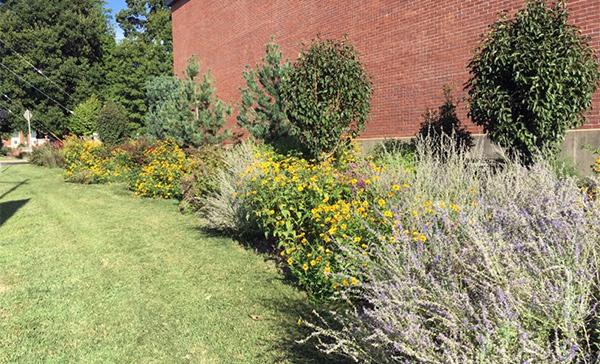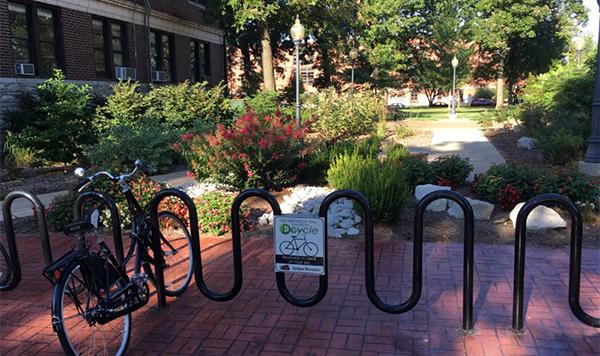Don't Call It Sustainability (the "S" word)
I don't know if it is me, or if there really is a hesitancy by people to adopt sustainable landscaping practices. It could be me, because I preach sustainability, and honestly my message can be fire and brimstone at times. But I also wonder if there isn't a weird kind of sustainability reluctance (sustainability overload perhaps) that turns people away from any landscape called sustainable'. In my 25 years of landscaping, sustainable has meant saving time, money and staff, resources I never had enough of. But even 10 years ago I wouldn't have used the word sustainable. I was just trying to supply value. You see sustainable landscaping is really more about value, rather than anything tree-huggy or save-the-world effort. Let me explain.
Defining Value
If you define value as a noun, it means "the importance, worth or usefulness of something". If you define it as a verb, it means "to consider something to be important or beneficial". For the landscape or golf course, both of these definitions fit. Our organizations value the landscape. This is because we play on them, work in them, study in them, and even use the landscape to market our organizations. Landscapes also provide ecological services such as rain water diversion, pollution scrubbing, temperature moderation, and carbon sequestration. Clearly there is a lot to "value" in the landscape. The beauty of these attributes are that they are not mutually exclusive, but are mutually supportive. Kind of an upwards benefit cycle. A landscape that provides value can be sustained. A landscape that does not create value is not sustainable.
Aesthetic Value
Landscapes are frequently valued on how they look. A college campus should appear well-kept. This means the landscape contains no overgrown plants, few weeds and no dead bushes. The landscape should also have some plant variety (color) and the design should adhere to accepted landscaping principles (open to broad perspective, a blog in itself!). Likewise, a sports field or course should have uniform turf, be relatively weed free and demonstrate aesthetic maintenance practices. These practices may be limiting pest sign/symptoms and artistic stripe mowing. The aesthetics of the landscape goes a long way in creating value in a patron's minds, and in the perspective of an organizations management. Aesthetic value is the most obvious means by which a landscapes value can be measured, but is also highly subjective to the eye, and requirements, of the beholder.
Functional Value
Value can also be found in how the landscapes supports/enhances the organizations goals. On a golf course this is quality golf experience for club members and patrons. It is also a pleasing experience for visitors who possibly come to a course for peripheral offerings such as dining or swimming. Here at Drury our main objective is providing a high quality education for our students. The landscape must create an atmosphere that is pleasing and safe for our community, plus is complementary to the learning environment. Another important function is enhancing the environment/ecology of our campus. The functional landscape markets the organization. It helps create the perception (reality) that solidifies the image the organization seeks to portray.
Financial Value
Frequently, financial value trumps all others. Financial value is largely about matching available resources with the desired landscape output. While this value can be measured in dollars, one must also see beyond direct grounds costs. Money spent on grounds cannot be spent elsewhere, and vice versa. I have found that money will flow to areas that create value (not always, but without value, I guarantee the money will dry up eventually). In some instances, revenue can be used to evaluate value, but there is not always a clear relationship between the landscape and its costs/benefits. Financial value may be seen from different perspectives by the Grounds Professional and the organization, but adopting a shared understanding of financial value can be established.

Properly designed beds require less maintenance, but still return value in the right location. This bed could not be placed at the entrance to the Visitors Center.
Sustainable Value
In my experience, "sustainable" conjures up an image of wildness, letting the landscape go, or if I am fortunate, a tallgrass prairie. But none of these areas is appropriate for the majority of organizations. Sustainable to me is asking "will the landscape do what I need organizationally if I walk away?" This proposition is significantly more complicated than simply good horticulture, or liquid propane mowers. Sustainability can be hard to sell, but everyone wants value. My task as a Grounds Manager is to acceptably unite the sustainable landscape with organizational value. Because if the organization doesn't value me, I won't have an opportunity to be sustainable.

Landscaping can unite many metrics of value: Aesthetic, Functional and Financial. Even the bike rack and signage convey understanding of sustainable value.



0 Comments
Recommended Comments
There are no comments to display.